 | |||
 |  |
 | |
 |  | ||
 |  | ||
 |  | ||
 |  | ||
|
|
Department 56(r) Village TrainsWhen Dept. 56 issued their first set of buildings in 1976, few people could have predicted their popularity. As it turned out, Dept. 56 almost singlehandedly reinvigorated a longstanding, but lapsed North American tradition of Christmas village displays in the home. That said, the traditional displays usually included toy trains along with the buildings, figures, and accessories. So, it wasn't long after Dept. 56's introduction before people who had never owned a toy or model train were scrounging for trains or train-related products that would make the village seem "complete."However, Dept. 56 lacks the facilities to produce working toy trains. Instead, the company has alternated between two strategies for fullfilling their customers' demand for trains.
Both strategies have produced unique, collectible products. As a model train buff myself, I naturally would prefer to have a working electric train than a "train statue." But the ceramic trains have been very popular with folks who either didn't have room or time to deal with a working train anyway, or who thought the ceramic trains matched the appearance of the rest of their town better than the electric trains. This article is not a collector's guide, simply an introduction to some of the train products that Dept. 56 has released. That said, we also think a little historical context will be helpful. Topics discussed in this article include:
Traditional Christmas VillagesTechnically Dept. 56 did not invent the "Christmas Village." In fact, Christmas villages were widespread and known by many other names throughout North America between 1890 and 1965 ("putz," "Christmas garden," and "train garden" were a few of the names). These miniature communities were usually populated by houses made of cardboard and/or tinplate. And they were almost always served by a windup or electric train of some sort. But by the late 1960s, many factors had made large, month-long Christmas displays of trains and towns impractical, or at least outmoded for most families.Dept. 56(r) Saves Christmas (Villages)The official story is that, in the mid-1970s, a half-dozen friends on a drive in New England stumbled across an old-fashioned snow-covered village and thought something like, "Wouldn't it be nice to capture that charm for other folks?" And in 1976, Department 56, did just that, with six ceramic buildings that caught holiday decorators' attention, revived Christmas villages, and started an industry. The church from Dept. 56's original 1976 Snow Village(r) is shown to the right. If you want to see a photo of the entire set on the Dept. 56 web page, click here Soon folks across North America were setting up holiday village displays much like their grandparents did. Since 1976, the ever-increasing sales allowed Dept. 56 to stay ahead of their competion in many ways by constantly increasing the quality and variety of their offerings. But many North Americans also had a dim cultural memory of trains going with the towns. Some dug out their old Lionel sets and decided they looked too big, or took up too much room, or needed service. Others dug out old HO sets and decided they looked too small next to the Dept. 56 figures and accessories. But a market for trains and train-related products to go with Dept. 56 communities was definitely emerging.
One problem for folks trying to mix trains and collectible villages is that very few collectible village items are in the same scale as any of the other items, even from the same "collection." Mostly this is because rigidly adhering to scale, as, say, a modern model railroader would, would actually produce pieces that wouldn't look right together on the average shelf, mantel, or buffet. For example, a cathedral that was really ten times the size of the cottage next to it would take over the living room. The pictures to the right actually use photos of real structures, not models, but you get the general idea.
|
| North Pole Express #56368 Released 1996, Retired 1999 |  |
Dept. 56(r) Stations With Train Sculptures
This section is for Dept. 56 stations that were issued with ceramic or porcelain trains, although at least one of these stations was offered both with and without trains. Also, the trains occasionally get separated from the station, so you may have come across one of these trains and not realized that it went with a station.Note: Dept. 56(r) had made many more train stations that were sold separately. If there is interest, we will add a page on those as well.
| Station 50856 Introduced 1980, retired 1985, was apparently sold with and without three ceramic train pieces. The locomotive seems to be inspired by a "turn-of-the-last-century" European tank engine. The coach seems European, the caboose, North American, from the same period. |   |
| Brown Station, 50512 Introduced ???, retired 1986, came with a small locomotive and passenger car that seem inspired by "turn-of-the-last-century" British equipment, some of which was still in use as late as the 1950s. |  |
| Village Station #51225 Introduced 1988, retired 1992, came with a small locomotive and passenger car. The train is the same mold but different colors as the train that came with Brown Station 50512 above. Other color variations of some of these trains have also been reported. |  |
| Chadbury Station #65285 Introduced 1986, retired 1989, came with a small locomotive and passenger car. The boiler's shape, the funnel-shaped smokestack, and the colors indicate that the locomotive represents a mid-19th-century North American "American-style" locomotive, similar to the locomotive in the Bachmann-made #5980_3 below. |  |
Dept. 56(r) Electric Trains
This section is for electrically-powered trains. Since Dept. 56 doesn't have a facility that can make electric trains, they have contracted with other companies to produce several products under the Dept. 56 name. You'll probably notice that I say more about these than I do the ceramic and porcelain pieces. But, frankly, there's more to say, since each one is so different from the others.Village Express HO Train and Track Set
(#5997_8, GATA)
 Introduced 1987, discontinued 1988. This set was brought to our attention by a reader last year. Frankly, until the reader sent these photos, I had never seen this set or anything like it. It is a real working HO train that uses a power supply and track with metal rails. But the pieces are mismatched and toylike, especially compared to the Bachmann trains.
Introduced 1987, discontinued 1988. This set was brought to our attention by a reader last year. Frankly, until the reader sent these photos, I had never seen this set or anything like it. It is a real working HO train that uses a power supply and track with metal rails. But the pieces are mismatched and toylike, especially compared to the Bachmann trains.
The outside labeling says, "Made exclusively for Department 56 in Macau, #5997-8." The reader couldn't find a manufacturer's mark on the train itself, but the track had the following markings:
Based on that, I was able to track down another "GATA playart" locomotive" that was imported under its own name. It looks like the Dept. 56 version has had a diamond smokestack and an oil-burning headlight applied to make it look more old-fashioned.
 |
 |
The Dept. 56-branded GATA playart locomotive |
Another GATA playart locomotive, sold under the GATA brand name |
The power supply has a model # of 70210, which is the same as the model number of an AHM-brand power supply, although the brand name has been covered with a sticker that says Dept. 56.
 One other interesting feature is that, although the locomotive and caboose are obviously inspired by North American prototypes, the coaches are based on Euro, or maybe even Asian prototypes. It is also interesting that there are not road or car names on the coaches.
One other interesting feature is that, although the locomotive and caboose are obviously inspired by North American prototypes, the coaches are based on Euro, or maybe even Asian prototypes. It is also interesting that there are not road or car names on the coaches.
Heritage Village Collection Village Express
(#5980_3, Bachmann HO)
 Issued ???, retired 1996. Some time in the mid-1990s, Dept. 56 partnered with Bachmann to offer this option, a true HO model of a mid-19th-century "American" locomotive and its coaches. This is a better set in general than the GATA set, and shows Dept. 56 moving toward more realistic trains.
Issued ???, retired 1996. Some time in the mid-1990s, Dept. 56 partnered with Bachmann to offer this option, a true HO model of a mid-19th-century "American" locomotive and its coaches. This is a better set in general than the GATA set, and shows Dept. 56 moving toward more realistic trains.
Bachmann is one of the world's largest model train manufacturers, and they have a long history of both providing good value and standing behind their products.
For this set, Bachmann simply repainted equipment it was already making in real railroad colors, such as Union Pacific and Northern Pacific. If it helps you to get a sense of period, most of the locomotives used between 1855 and 1870 were very similar to this one in design. To see the difference between a toy and a scale model, check out the locomotive in set # 65485 above - they're both inspired by the same basic type of locomotive.
If you have one of these, you'll be glad to know that the Bachmann locomotive in this set has a lifetime warranty  from Bachmann. The track in this set is also compatible with Bachmann's most popular line of HO track, called EZ-track. The one "downside," if there was one, was that, as an HO model, it looked too small next to most Dept. 56 figures and accessories.
from Bachmann. The track in this set is also compatible with Bachmann's most popular line of HO track, called EZ-track. The one "downside," if there was one, was that, as an HO model, it looked too small next to most Dept. 56 figures and accessories.
Village Express (#52710, Bachmann On30)
 Introduced 1998, Retired, 2006. By the time Dept. 56 had dabbled in two HO sets, it was time to offer a train that would really look right with the Dept. 56 collections.
Introduced 1998, Retired, 2006. By the time Dept. 56 had dabbled in two HO sets, it was time to offer a train that would really look right with the Dept. 56 collections.
Bachmann Trains to the rescue! Rather than repainting another pre-existing train for Dept. 56, they went to work in a scale that most hobbyists and manufacturers had overlooked for a long time: On30.
 | 
|
On30 trains are O-scale (1:48) models of "narrow gauge" trains that ran on 30" wide tracks (most trains run on 56.5" track). In the model railroading world, On30 train pieces are nearly the same size as the pieces in most Lionel starter sets, but they run on HO track instead of the big three-rail stuff. They also have more realistic detailing, and are, frankly just more charming.
These trains came with an engine, tender (coal car), three coaches, an oval of Bachmann EZ-track and a power supply - everything you needed to set up a train with your town.  They even came with a choice of names to put on the observation car, depending on whether you were setting up "The Original Snow Village," a "New England Village," an "Alpine Village", or a "Christmas in the City" set.
They even came with a choice of names to put on the observation car, depending on whether you were setting up "The Original Snow Village," a "New England Village," an "Alpine Village", or a "Christmas in the City" set.
Perhaps best of all, Bachmann provided a limited lifetime warranty on the locomotive, and you knew you could always buy more tracks, cars, or replacement parts. You may be able to tell that this is my favorite train on this page - in fact it's the only one I currently own, and I hope to include photos of it with several projects in the coming months.
 That said, if you like the look of this train, and can't track down the Dept. 56 version, you should know that Bachmann now makes the same basic set in different colors, and that they also make about twenty different customized versions of this set for Hawthorne Village(r), including sets with paint jobs inspired by Thomas Kinkade and many others.
That said, if you like the look of this train, and can't track down the Dept. 56 version, you should know that Bachmann now makes the same basic set in different colors, and that they also make about twenty different customized versions of this set for Hawthorne Village(r), including sets with paint jobs inspired by Thomas Kinkade and many others.
Village Streetcar
(# Bachmann On30)
 Recognizing that many folks who set up Dept. 56 villages don't have room for a whole loop of track, Dept. 56 also worked with Bachmann trains to release an On30 streetcar that would go back and forth on a little zig-zag track that you could make fit just about anywhere. Like the #52710 On30 train above, the Dept. 56 version of this product has been retired, but Bachmann continues to manufacture similar streetcars under its own name, and they are best-sellers year after year.
Recognizing that many folks who set up Dept. 56 villages don't have room for a whole loop of track, Dept. 56 also worked with Bachmann trains to release an On30 streetcar that would go back and forth on a little zig-zag track that you could make fit just about anywhere. Like the #52710 On30 train above, the Dept. 56 version of this product has been retired, but Bachmann continues to manufacture similar streetcars under its own name, and they are best-sellers year after year.
One thing has changed, besides the paint job, though - the original Dept. 56 streetcar was a "bump and go," meaning that it would reverse  direction by banging a switch that reversed the polarity of current going to the motor. When it got to the other end of its little "layout," it would bump another switch and change direction again. If you put the trolley on any ordinary HO loop of track, it would just keep going the same direction indefinitely.
direction by banging a switch that reversed the polarity of current going to the motor. When it got to the other end of its little "layout," it would bump another switch and change direction again. If you put the trolley on any ordinary HO loop of track, it would just keep going the same direction indefinitely.
Today, Bachmann makes similar sets, but the control system is a little more sophisticated, resulting in less wear and tear on the streetcar's motor. They are delightful products and very popular with folks who want to run "trains" on a mantel, windowsill, or spinet piano top.
 If you have one of the original Dept. 56 models, congratulations. You should also know that your streetcar has a lifetime warranty. BUT, and this is a big BUT, they don't work the same today as they did then, so if Bachmann can't fix your streetcar, they may replace it with one that doesn't have the same mechanism or colors, so be sure to work that out with them ahead of time.
If you have one of the original Dept. 56 models, congratulations. You should also know that your streetcar has a lifetime warranty. BUT, and this is a big BUT, they don't work the same today as they did then, so if Bachmann can't fix your streetcar, they may replace it with one that doesn't have the same mechanism or colors, so be sure to work that out with them ahead of time.
Recently, my friend, vintage-style house designer Howard Lamey, has acquired one to use on his displays and Christmas villages. As you can see in the photos below, these little trolleys look great in non-Dept. 56 settings as well.
 |

|
 In subsequent years, Dept. 56 contracted with another supplier to provide an autoreversing set that featured a blue streetcar. It was a different design by a different manufacturer but also used bump-and-go technology. Again, this is appropriate for use with either a holiday village or with O scale accessories. I'm told that it was introduced in 2004 and retired in 2008, but it does not seem to have sold in the same quantities as the Bachmann-made version.
In subsequent years, Dept. 56 contracted with another supplier to provide an autoreversing set that featured a blue streetcar. It was a different design by a different manufacturer but also used bump-and-go technology. Again, this is appropriate for use with either a holiday village or with O scale accessories. I'm told that it was introduced in 2004 and retired in 2008, but it does not seem to have sold in the same quantities as the Bachmann-made version.
Department 56 Lionel Train Set
One source says that these were produced from 1995-2001. Unlike the electric trains above, they were not marketed as Dept. 56 products. Rather they are from a limited-edition Lionel-branded series that commemorates Dept. 56, just as other Lionel train sets have commemorated Coca Cola(r) or some such. Lionel has produced quite a few Christmas cars over the years, so if you track one of these trains down, you might also get a non-Dept. 56 Christmas car or three in the collection. The pieces that I'm sure are associated with Dept. 56 include:
Reader Response: Rich Guertin, from Annandale, Virginia writes: I noticed on your village train page you had the Lionel Dept 56 cars from Allied Trains listed. You are missing a couple of the pieces from your list, however. There was a gondola with presents, a oil tanker labeled for Holly Brothers (a Snow Village Garage/Service Station), and a hopper car with a white coal load that was labeled "Real Plastic Snow", the name of Dept 56's fake snow product. The train looks great with my Christmas in the City collection!
What If I Have a Dept. 56 Train I Want to Sell?
I realize that this topic may seem out of place, but it's a question I get all the time. Readers are glad to find someone who knows something about the unwanted train they got for a Christmas present or whatever, and assume that I either want it for myself or know someone who wants it. I like hearing from folks in this situation, because I like hearing from readers, period. But usually I can't help all that much.If you own and want to try to sell one of the trains on this page, your best bet is probably a die-hard Dept 56 collector. What your train is "worth," though, depends on the condition of the product (including boxes, if you have them) and finding a right buyer who specifically wants this product, or at least a Dept 56 product for his or her Christmas village.
To get some idea of value, you might try to find your train or a similar product on eBay, and watch for the final selling price. This is especially useful if you see three or four of the same product sell within a few months. One or two sales may be "flukes," going for much higher or lower than the pieces "should" cost. But if you see several you should get a sense of the average value.
Whenever I write this kind of article folks contact me and ask if I want to buy their trains. Unfortunately, I'm not a collector, so "collector's value" doesn't mean anything to me. In addition, my space and budget are both very limited, and I already have more trains than I technically "need." (Actually I already have more trains than I have time or space to run . . . . )
Other Train Options for Christmas Villages
This section lists a few options for finding electric trains that should look good with most collectible villages.- Bachmann On30 Christmas Trains
- Hawthorne Village(r) On30 Collectible Trains, including:
- O-Gauge (Lionel) Christmas Trains
From the company that made the best-ever Dept. 52(r) train set. Bachmann's On30 trains are O-scale trains that run on two rail (HO-gauge) track. Thus, Bachmann has permanently married the enjoyment of trains to the enjoyment of Holiday Villages. Their offerings include Victorian-era trains and streetcars that look great with most Christmas villages, including Dept. 56(r).
 Hawthorne Village(r) On30 Train Collections - Hawthorne Village(r) Christmas train collections use the same Bachmann train chasis and frames that were used for the Dept. 56 set #52710. Consequently, they look great with most holiday village sets, including those by Dept. 56(r). For your convenience, they run on HO track, so they will fit just about anywhere. New sets are constantly being issued, so check back often.
Hawthorne Village(r) On30 Train Collections - Hawthorne Village(r) Christmas train collections use the same Bachmann train chasis and frames that were used for the Dept. 56 set #52710. Consequently, they look great with most holiday village sets, including those by Dept. 56(r). For your convenience, they run on HO track, so they will fit just about anywhere. New sets are constantly being issued, so check back often.
 Hawthorne Village train collections are "subscription" trains, which means that you get (and pay for) one piece at a time, beginning with the locomotive, which is always an outstanding value.
Hawthorne Village train collections are "subscription" trains, which means that you get (and pay for) one piece at a time, beginning with the locomotive, which is always an outstanding value.
Because Hawthorne Village trains use reliable mechanisms and other parts from Bachmann On30 trains, they run like "champs," and service will always be available. But the Hawthorne Village designers add artwork and other detailing that make these trains much more attractive and collectable. In spite of the fact that they are limited-edition, subscription trains, they are also an excellent value (and among our best sellers every Christmas season since 2004). So it's never too early to consider signing up for the one you like while it is still available.
Specific Hawthorne Village(r) trains that have been best sellers every year since they were introduced include:
-
 Thomas Kinkade(r) inspired Hawthorne Village trains. The Christmas Express has been a perennial best-seller. But several other Kinkade-inspired trains and towns are available, including the "End of a Perfect Day" train and the "Lamplight Village" train and town.
Thomas Kinkade(r) inspired Hawthorne Village trains. The Christmas Express has been a perennial best-seller. But several other Kinkade-inspired trains and towns are available, including the "End of a Perfect Day" train and the "Lamplight Village" train and town.
 Coca Cola(r) Train - Inspired by classic Coca Cola(tm) advertising art of the early and mid-20th century. The 2004 issue of this train was so popular that, when they sold out, Hawthorne Village(r) negotiated a new contract wtih Coca Cola(tm) to allow them to reissue this set.
Coca Cola(r) Train - Inspired by classic Coca Cola(tm) advertising art of the early and mid-20th century. The 2004 issue of this train was so popular that, when they sold out, Hawthorne Village(r) negotiated a new contract wtih Coca Cola(tm) to allow them to reissue this set.
 O-Gauge (Lionel) Christmas Trains - For about a century, Lionel(tm) has been making O-gauge trains that run on three-rail track. Lionel(tm) trains have a worldwide reputation for being fun and reliable. All sets include an oval of track and a Lionel power supply to run your trains. They will also look nice with your Christmas village structures, if you have room for a track circle (about 40" minimum).
O-Gauge (Lionel) Christmas Trains - For about a century, Lionel(tm) has been making O-gauge trains that run on three-rail track. Lionel(tm) trains have a worldwide reputation for being fun and reliable. All sets include an oval of track and a Lionel power supply to run your trains. They will also look nice with your Christmas village structures, if you have room for a track circle (about 40" minimum).
 IN 2007, at popular request, we added a page describing several of Lionel's best-selling non-Christmas trains.
IN 2007, at popular request, we added a page describing several of Lionel's best-selling non-Christmas trains.
For details about Lionel O-gauge "non-Christmas" offerings, please click on the picture to the right.
Lionel John Bull Passenger Set
- If you want a train that is really authentic for an 1830s railroad, and you don't mind paying extra for a special item, consider the Lionel John Bull set. This is an intricately detailed model of a real train that was made in England but shipped to and used in North America. It will look very nice with a Dickens-era set or any 19th-century Christmas village structures, if you have room for a track circle (about 40" minimum).
 IN 2007, at popular request, we added a page describing several of Lionel's best-selling non-Christmas trains.
IN 2007, at popular request, we added a page describing several of Lionel's best-selling non-Christmas trains.
For details about Lionel O-gauge "non-Christmas" offerings, please click on the picture to the right.
Honorable Mention: S-Gauge (American Flyer and American Models) Trains - These are made in such small numbers today that I don't have a link. But I wanted to point out that American Flyer S gauge trains are about the size of Bachmann On30 trains, which makes them a good match in scale for your holiday village. The down side is that most AF track makes a very wide circle, about 48", so you need a lot of room to run American Flyer trains. If you have an old American Flyer set and have room to set it out (say under the Christmas tree), you're in good shape. Also, Flyer did make a smaller radius called "Pikemaster" track that is closer to 36". So, if you can scrounge some of that up, you might be able to squeeze a Flyer railroad into a tighter spot. That said, if you don't have any AF in the family at this time, and you're looking for a train for your town, I'd start with Bachmann On30 or something based on the Bachmann On30 chassis, with Lionel being my second choice (or third, depending on how you count it).
For More Information
- What Do Trains Have to Do With Christmas? from Family Christmas Online(tm) - This article that caused an explosion of interest in Christmas trains and towns. Many folks have found parts of their own family histories in this fun history of an American phenomenon.
 What is a Glitterhouse? - History and project ideas inspired by those vintage cardboard houses folks used to use for their Christmas displays. Includes an index to many free downloadable instructions and plans for bringing vintage charm to your Christmas village or railroad.
What is a Glitterhouse? - History and project ideas inspired by those vintage cardboard houses folks used to use for their Christmas displays. Includes an index to many free downloadable instructions and plans for bringing vintage charm to your Christmas village or railroad.
 "Tribute to Tinplate" Articles - a series of projects that pay tribute to the tinplated-steel trains and towns of a century ago. Free downloadable commercial-grade graphics and instructions will help you inexpensively add an authentic vintage look to any indoor railroad or Christmas village. Most projects have multiple pre-scaled plans and graphics, plus scalable graphics for the smaller scales, so you can easily add a vintage look to ANY railroad or holiday village, no matter what size your trains and towns are. We have more on the drawing board, so be sure and check back.
"Tribute to Tinplate" Articles - a series of projects that pay tribute to the tinplated-steel trains and towns of a century ago. Free downloadable commercial-grade graphics and instructions will help you inexpensively add an authentic vintage look to any indoor railroad or Christmas village. Most projects have multiple pre-scaled plans and graphics, plus scalable graphics for the smaller scales, so you can easily add a vintage look to ANY railroad or holiday village, no matter what size your trains and towns are. We have more on the drawing board, so be sure and check back.
Recommended Resources on Other Sites
- LittleGlitterHouses.com, Howard Lamey's own site about glittered cardboard Christmas houses, featuring many he designed himself. Howard has also expanded into building his own tinplate trains and other vintage-style structures.
- "Papa Ted's Place" - Ted Althof's extensive resource about vintage pasteboard houses. It includes history, many photos from other people's collections, and resources to help you restore your own.
- About Nativities - From Family Christmas Online(tm) - describes how German-American Nativity displays grew into communities and landscapes that included pasteboard, glittered houses and even electric trains.
To Return to the BIG Christmas Trains(tm) Primer Page, click here.







| 
|
 |
 |
 |  |  |
Note: Family Garden TrainsTM, Garden Train StoreTM, Big Christmas TrainsTM, BIG Indoor TrainsTM, BIG Train StoreTM, and Trains-N-TownsTM are trademarks of Breakthrough Communications (www.btcomm.com). All information, data, text, and illustrations on this web site are
Copyright (c) 1999, 2000, 2001, 2002, 2003, 2004, 2005, 2006, 2007, 2008, 2009, 2010, 2011, 2012, 2013 by Paul D. Race.
Reuse or republication without prior written permission is specifically prohibited.
Big Christmas Trains(tm) is a participant in the Amazon Services LLC Associates Program, an affiliate advertising program designed to provide a means for sites to earn advertising fees by advertising and linking to amazon.com.
For more information, please contact us
to see quality collectible Christmas gifts and decorations that have been popular with our
readers. Many are designed by Thomas Kinkade and other world-class artists and designers.
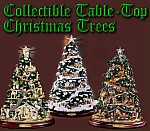
| 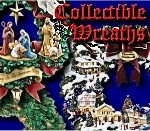
| 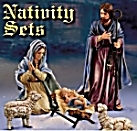
| 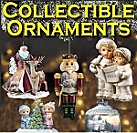
| 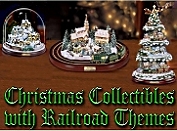
|












 Bachmann On30 Christmas Model Trains
Bachmann On30 Christmas Model Trains